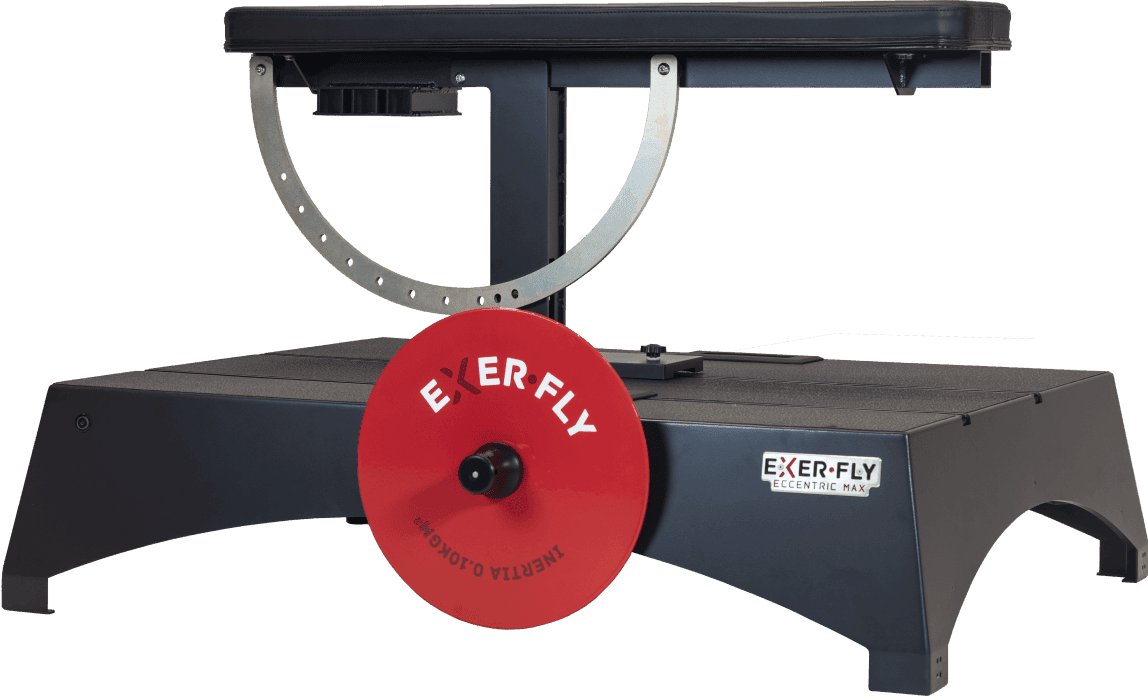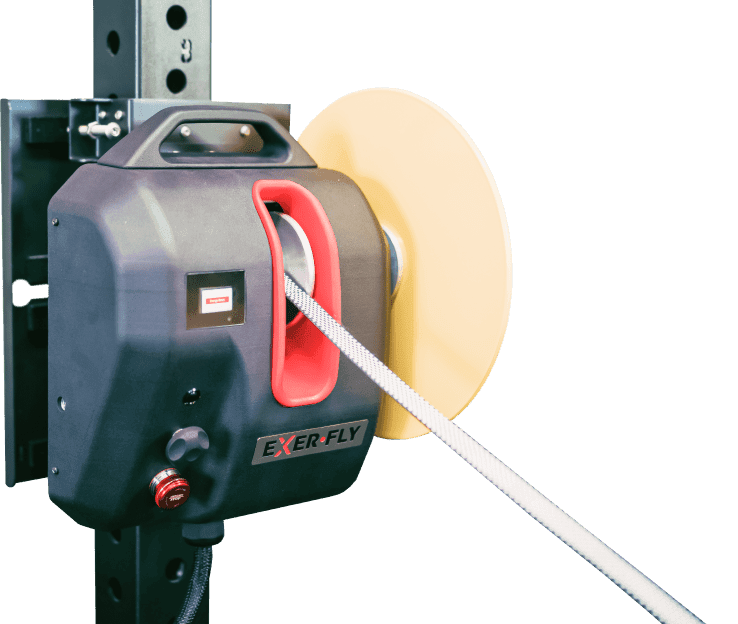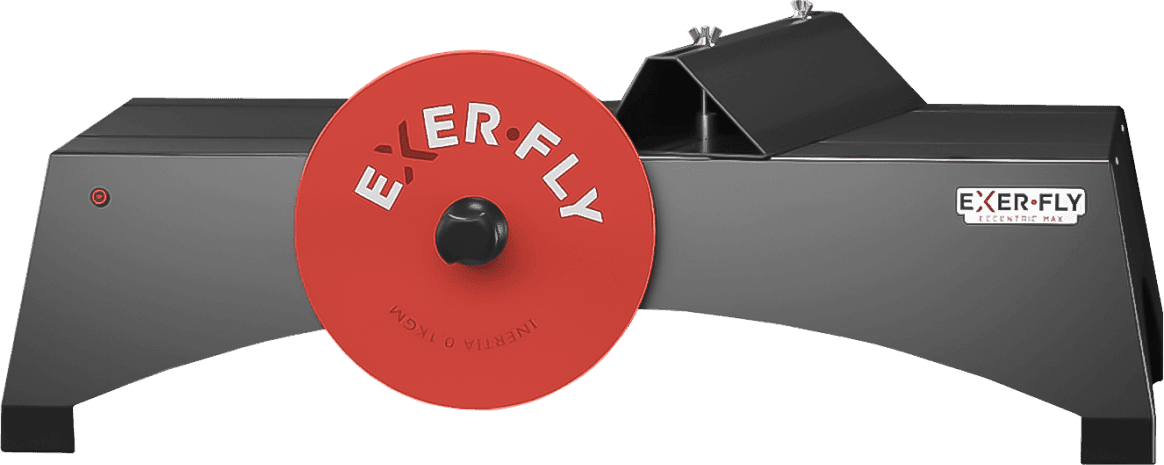
Deceleration in Sport: Putting on the Brakes With Exerfly
Introduction
Most athletes want to run and change direction fast. That’s reflected in the massive popularity of speed and agility development programs in both research and applied practice. But for athletes to get the most out of their speed, they also need to be able to put on the brakes!
The ability to rapidly decelerate the body’s momentum from fast running speeds is critical for both performance and injury, but often underappreciated. For example, change of direction ability is highly dependent on the ability to brake hard and fast, and then re-accelerate in the new direction. But this requires the athlete to generate large amounts of braking forces in short timeframes, which in turn places a large mechanical load on the braking leg. For this reason, deceleration is now receiving more attention as a key skill that athletes must be prepared for if they’re going to play at the highest level possible without injury [6].
Preparing athletes for the demands of repeated decelerations requires a combination of on-field sport-specific exposure to those demands, combined with training methods that prepare athletes to produce and tolerate the necessary forces involved with braking hard and fast [7].
Flywheel resistance training (FRT) and its ability to provide high eccentric loading across different movements patterns is an ideal companion to the on-field deceleration work. This is demonstrated by researchers who have found FRT to be a highly effective tool for developing the ability to produce braking forces and improving change of direction performance [2,3].
What are the demands of deceleration?
Rapidly braking from high speeds is considered one of the most demanding movements that commonly occur in sport. During the final braking steps, athletes can push into the ground with peak forces as high as 6x their body mass while loading the braking leg in very short timeframes [9]. Unsurprisingly, braking hard and fast has been identified as a situational pattern where injuries such as ACL ruptures and severe muscle injuries commonly occur [4,5].
To generate the braking forces involved, athletes must perform a well-timed sequence of actions involving powerful triple extension from the ankle, knee, and hip to maintain a strong body position, and powerful efforts from the quadriceps and calf muscles to attenuate the impact forces and stabilize the ankle and knee [7,9]. This requires strong and powerful muscles in the calf, hamstrings, glutes, and quadriceps, as well as robust tendons to produce the necessary braking forces and tolerate the loading on the lower extremity.
When decelerating in game situations, athletes must navigate a balance between performance and injury risk. A well-timed rapid deceleration can create space on offense or close down space on defense. But if the athlete is not prepared for the high demands placed on their braking limb, they will either need to slow down more gradually (sacrificing performance) or risk loading the limb beyond what it can tolerate (risking injury).
As an example, Figure 1 shows results from some max effort deceleration testing I did with team sport athletes [8]. This approach to analyzing and visualizing deceleration performance is based off the methods developed by Dr. Damian Harper from Human Braking Performance (link: https://humanbrakingperformance.com). I consistently found that the best “decelerators” were able to start braking earlier, harder, and faster than the weaker decelerators who had to gradually slow down. This capability is key if they are to use deceleration to either create space or rapidly react to an opponent in their sport.

Figure 1. Example data from a max effort 20-m deceleration task. Vmax = point of max velocity; the Early Deceleration phase represents point from Vmax until 50% of Vmax. The Late Deceleration phase was from 50% of Vmax until end of test. The best decelerators would brake harder and faster during the Early Deceleration phase, while weaker decelerators would slow down more gradually to help distribute the braking loads across longer timeframes.
However, I also found that this ability to brake hard and fast was closely associated with the physical capabilities of the athletes, with the best decelerators being stronger and more powerful in other physical assessments. Finding a suitable balance between performance and injury risk is easier to navigate if you have the prerequisite physical components and the skill to use them effectively.
This is where FRT can play an important role in building the physical capacities that underpin deceleration performance and bridging the gap between the gym and sport-specific braking demands.
Building the Brakes with Exerfly FRT
The neuromuscular characteristics that have been identified as contributors to deceleration performance are also those that FRT is well-suited to develop. This includes:
- Eccentric Strength and power of the Ankle, Knee, and Hip Extensors
- Reactive Strength and the ability to efficiently transition between eccentric and concentric actions.
- Muscles and tendons that can help tolerate and attenuate the high impact forces
- Concentric Strength and Power to help re-accelerate out of the deceleration
FRT with Exerfly devices has several advantages for developing these physical contributors to deceleration ability:
- Maximal and variable resistance across the entire concentric range of motion.
- High eccentric loading, with the option to add eccentric load with the Exerfly motorized technology.
- Coupled concentric and eccentric actions to target force capabilities within each phase, as well as the transition between phases in a SSC-type action.
- The ability to efficiently evoke beneficial muscle and tendon adaptations [6,11], which underpin the ability to produce and tolerate high braking forces.
- Exerfly units allow for both dynamic and isometric training to be performed in sport-specific joint angles and movement patterns.
From a practical standpoint, the Braking Performance Framework from Harper and colleagues [7] includes several categories of training exercises which can benefit braking capabilities. This approach combines on-field deceleration exposure with off field training that develops the physical attributes that underpin deceleration ability. A basic overview of each of these categories and the role of Exerfly training is provided below.
Braking Elementary Exercises
- Goal: Target muscle and tendon adaptations that allow the athlete to generate and tolerate large braking forces.
- Scheduling: Often a primary focus during early pre-season when the aim is to begin developing key muscle-tendon adaptations and initial exposure to deceleration.
- On-field training examples: Pre-planned deceleration drills
- Training with Exerfly
- Higher inertial loads (example: 0.1-0.3 kg*m2 or 1-3 Red Flywheels) to promote higher force outputs with exercises such as half-squats, romanian deadlifts, calf raises, and leg curls.
- Consider introducing Exerfly Motor to increase eccentric loading
- Isometric training: For hypertrophy; 3-30 second contractions at ~70-75% max force; For strength; 1-5 second contractions at 80-100% max force [10].
Braking Developmental Exercises
-
Goal: Develop rapid braking force capabilities in short timeframes. Also add higher degrees of specificity.
-
Scheduling: Often a focus during later pre-season after foundation of strength developed.
-
On-Field training: Pre-planned change of direction using sport-specific movement patterns.
-
Flywheel training:
- Lighter inertial loads (example: 0.05 kg*m2 or 1 Blue Flywheel) and faster movements to target rapid eccentric force and power.
- Testing power outputs across multiple loads can help identify inertial load that provides highest power outputs.
- Delayed braking strategy (braking hard and fast at end of eccentric phase) with rapid transition to next concentric to promote SSC improvements.
- Isometric training: Maximal effort bursts of contraction with ballistic intent can promote rate of force development [10].
Braking Performance Exercises
-
Goal: Focus on sport-specific exposure to deceleration demands in complex environment.
-
Scheduling: Often a primary focus leading into, and during, competitive season.
-
On-Field Training: small-sided games, reactive deceleration and change of direction drills
-
Flywheel training:
- Goal is to continue to improve, or at least maintain, physical attributes developed in other categories.
- May use a combination of strategies from above depending on schedule.
- Use of “micro-dosing” sessions during congested periods of competitive play may help maintain strength and power while minimizing fatigue [1].
Summary and Conclusions
FRT can be a valuable tool to help develop the required neuromuscular capabilities that allow athletes to brake hard and fast. This can help athletes perform at the highest level, reduce their risk of injury, and avoid detraining during busy times of the competitive season. The versatility of the Exerfly flywheel devices, including the ability to load different movement patterns, optimally load the eccentric phase, and bridge the gap between the gym can add another dimension to your training programs.
Keep an eye out over the next few weeks as I post specific examples and training tips for using Exerfly to develop strong and robust braking capabilities! Follow along: @alexehlert_phd
References
- Beato, M., Maroto-Izquierdo, S., Hernández-Davó, J. L., & Raya-González, J. (2021). Flywheel training periodization in team sports. Frontiers in Physiology, 12, 732802.
- Chaabene, H., Markov, A., Prieske, O., Moran, J., Behrens, M., Negra, Y., ... & Mkaouer, B. (2022). Effect of Flywheel versus Traditional Resistance Training on Change of Direction Performance in Male Athletes: A Systematic Review with Meta-Analysis. International Journal of Environmental Research and Public Health, 19(12), 7061.
- de Hoyo, M., Sañudo, B., Carrasco, L., Mateo-Cortes, J., Domínguez-Cobo, S., Fernandes, O., ... & Gonzalo-Skok, O. (2016). Effects of 10-week eccentric overload training on kinetic parameters during change of direction in football players. Journal of Sports Sciences, 34(14), 1380-1387.
- Della Villa, F., Buckthorpe, M., Grassi, A., Nabiuzzi, A., Tosarelli, F., Zaffagnini, S., & Della Villa, S. (2020). Systematic video analysis of ACL injuries in professional male football (soccer): injury mechanisms, situational patterns and biomechanics study on 134 consecutive cases. British Journal of Sports medicine, 54(23), 1423-1432.
- Della Villa, F., Massa, B., Bortolami, A., Nanni, G., Olmo, J., & Buckthorpe, M. (2023). Injury mechanisms and situational patterns of severe lower limb muscle injuries in male professional football (soccer) players: a systematic video analysis study on 103 cases. British Journal of Sports Medicine, 57(24), 1550-1558.
- Maroto-Izquierdo, S., García-López, D., Fernandez-Gonzalo, R., Moreira, O. C., González-Gallego, J., & de Paz, J. A. (2017). Skeletal muscle functional and structural adaptations after eccentric overload flywheel resistance training: a systematic review and meta-analysis. Journal of Science and Medicine in sport, 20(10), 943-951.
- Harper, D. (2023). Deceleration in Sport: Incidence, Demands, and Implications for Training. In Multidirectional Speed in Sport(pp. 74-103). Routledge.
- Harper, D. J., Cohen, D. D., Carling, C., & Kiely, J. (2020). Can countermovement jump neuromuscular performance qualities differentiate maximal horizontal deceleration ability in team sport athletes?. Sports, 8(6), 76.
- Harper, D. J., McBurnie, A. J., Santos, T. D., Eriksrud, O., Evans, M., Cohen, D. D., ... & Kiely, J. (2022). Biomechanical and neuromuscular performance requirements of horizontal deceleration: A review with implications for random intermittent multi-directional sports. Sports Medicine, 52(10), 2321-2354.
- Lum, D., & Barbosa, T. M. (2019). Brief review: effects of isometric strength training on strength and dynamic performance. International Journal of Sports Medicine, 40(06), 363-375
- Ruffino, D., Malliaras, P., Marchegiani, S., & Campana, V. (2021). Inertial flywheel vs heavy slow resistance training among athletes with patellar tendinopathy: A randomised trial. Physical Therapy in Sport, 52, 30-37.






